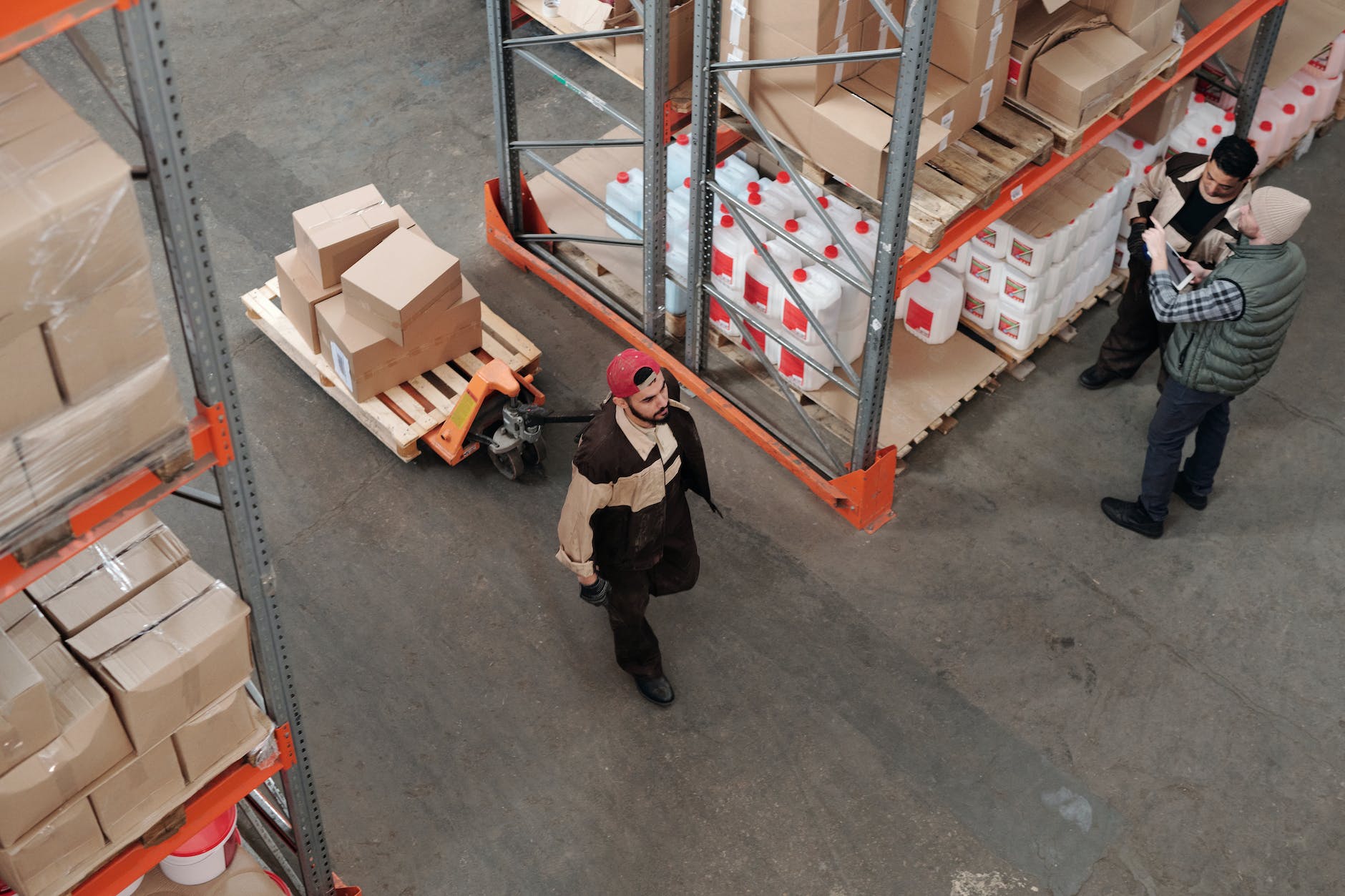
Warehousing and logistics are undergoing a profound transformation. As global marketplaces merge and customer demands heighten, the technological innovations within warehousing become crucial in establishing efficiency, accuracy, and speed.
Understanding the distinctions between a fulfillment center vs warehouse is crucial for efficient business operations. A fulfillment center is a specialized facility primarily dedicated to activities within the supply chain, such as receiving, storing, packing, and shipping products to customers. Its core purpose is to streamline the order fulfillment process. On the other hand, a warehouse primarily serves as a storage facility, focusing on efficient storage and tracking of goods.
The key benefits of a warehouse include better inventory management, cost-effective storage solutions, and the ability to optimize space for various types of products. In contrast, a fulfillment center’s advantage lies in its ability to handle the entire fulfillment process, ensuring faster order processing and improved customer satisfaction. Choosing the right facility for your business needs depends on your specific goals and operational requirements.
The emergence of Industry 4.0 has been a catalyst, introducing groundbreaking tools and strategies that optimize operations and reshape warehouse management.
In this article, we’ll explore the top eight innovations setting new standards in the warehousing domain, ensuring businesses are well-equipped to meet and exceed the evolving challenges of the future.
Robotics and Automated Picking Systems
The integration of robotics within warehouses has heralded a new era in logistics. No longer reliant on manual processes, today’s facilities utilize robotic arms and autonomous vehicles to retrieve items, drastically cutting downtime and errors.
These automated picking systems efficiently navigate complex storage structures, ensuring timely order fulfillment. Their precision and consistency promise not only operational advantages but also a refined customer experience, making them indispensable assets in modern warehousing.
IoT (Internet of Things) Integration
Harnessing the power of interconnected devices, IoT is revolutionizing warehouse operations. Smart sensors embedded throughout the facility provide real-time data on inventory levels, environmental conditions, and potential equipment malfunctions.
This constant stream of data equips warehouse managers with insights to make proactive decisions, optimizing workflows and ensuring seamless operations.
The fusion of IoT into warehousing spells a future of heightened responsiveness and unparalleled efficiency.
Modula Horizontal Carousels
In the quest for optimized storage solutions, Modula horizontal carousels emerge as frontrunners. These innovative systems utilize vertical space to its fullest, rotating shelves to bring inventory directly to the operator.
Beyond space-saving, their swift automated retrieval reduces wait times and boosts overall productivity. A blend of design ingenuity and technological prowess, Modula’s offering stands as a testament to the future of efficient warehousing.
Advanced Warehouse Management Systems
The digital transformation of warehouses finds its heartbeat in advanced WMS. These state-of-the-art systems transcend mere inventory tracking, offering a holistic view of operations.
Integrating seamlessly with other business tools, they provide predictive analytics, enabling managers to forecast demands and streamline processes.
By automating routine tasks and offering intelligent insights, modern WMS paves the way for a warehouse that’s not just reactive, but anticipatory and agile.
Drones for Inventory Management
Elevating warehouse efficiency to new heights, drones have found their niche in inventory management.
Swiftly navigating vast storage areas, these aerial devices capture real-time data, ensuring inventory accuracy without manual intervention. Their ability to quickly scan and relay information reduces stock discrepancies and aids in faster stock-taking processes.
In this drone-assisted era, warehouses are achieving accuracy and efficiency levels previously thought unattainable.
Augmented Reality (AR) Assisted Picking
The fusion of AR into warehousing is transforming the picking experience. Equipped with AR glasses, workers receive visual guidance directly onto their field of vision, ensuring accurate and rapid item retrieval.
This immersive interface minimizes errors and slashes training time, creating a more intuitive interaction with the inventory landscape. AR is the bridge between digital precision and human agility in the modern warehouse.
On-demand Warehousing
Adapting to fluctuating market needs, on-demand warehousing offers flexibility like never before. Businesses can now scale their storage space based on real-time demands, ensuring efficient resource utilization without being tied down by long-term commitments.
This model not only reduces overhead costs but also facilitates rapid market entry and exit strategies. In an era of volatility, on-demand warehousing stands as the beacon of adaptability.
Energy-efficient Infrastructure
Modern warehouses are not just about storage; they’re a testament to sustainable practices. Prioritizing energy efficiency, these facilities integrate solar solutions, LED lighting, and smart HVAC systems. This not only drives down operational costs but also lessens the environmental footprint.
As the world shifts towards greener alternatives, energy-efficient infrastructure in warehousing emerges as a key player in championing sustainable business operations.
Conclusion: Embracing the Future of Warehousing
The warehousing industry stands at a transformative crossroad, with innovation as its guiding light.
From the intricacies of augmented reality to the sustainability of energy-efficient infrastructures, these game-changing innovations are redefining the way businesses store, manage, and distribute products. Embracing these technologies is not just about staying relevant; it’s about envisioning and preparing for the future of logistics.
As we journey into this new era, warehouses equipped with these innovations will lead the way, setting benchmarks for efficiency, sustainability, and excellence.